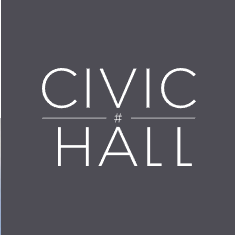TAGGED
- MICAH L. SIFRY
- January 20, 2016
- 4:26 pm
The good, bad, & ugly of tech to prevent sexual assault; high-tech fitting rooms; and more.
This is civic tech: Longtime civic hacker Luke Fretwell (founder of the GovFresh blog) announces the launch of Proud City, focusing on delivering “open, responsive digital services” for cities.
Microsoft is donating $1 billion in cloud services to nonprofits and university researchers over the next three years, its president and chief legal officer Brad Smith writes. “Our goal is to support 70,000 nonprofits through this initiative during that time,” he says. The effort is a founding initiative of Microsoft Philanthropies, launched last month.
Jason Tashea shares with Civicist some of the key findings from a report he recently completed for John Jay College of Criminal Justice on the current state of criminal justice tech and how to support and grow this ecosystem.
Lorelei Kelly argues that better civic tech, in the form of tools and platforms that allow for greater citizen participation in lawmaking, could help route around the future disputes like the one now roiling Oregon’s Harney County land occupation. (Something tells me the militia men who think they have the sole authority to interpret the Constitution might not buy into that, but we still could use much better processes for public engagement in lawmaking than the ones we have now.)
USC professor Henry Jenkins, who has long argued for the civic value of popular culture, posts a long, two-part dialogue with Tracy van Slyke, founder of the Culture Lab. Part one focuses on her 2014 report Spoiler Alert. Part two looks at how both progressives and conservatives are focusing on using culture to shift political narratives.
Some apps for helping victims of sexual assault are useful, like Circle of Six, which sends an urgent help message to six contacts with a single tap. And others, like a new batch from a company called “We-Consent,” are positively awful, writes Nora Caplan-Bricker for Slate.
The U.S. Census Bureau is embracing open source, FlowingData’s Nathan Yau reports.
The Points of Light CivicX Accelerator is accepting applications now for its Spring 2016 cohort.
Code for Australia is launching a six-week academy focused on helping re-imagine public service work.
San Francisco’s Office of Civic Innovation is looking for two new 2016 Mayor’s Innovation Fellows and the deadline to apply is February 2.
Tech and the presidentials: Some of the emails housed on Hillary Clinton’s home server while she was Secretary of State contained information classified Top Secret/Special Access Program, a higher level than previously reported, according to a letter to Congress from the intelligence community’s inspector general, NBC News’ Ken Dilanian reports.
Wired magazine’s editors came up with a list of the 20 tech insiders having the greatest influence on the 2016 campaign. While many of the people named definitely are players in the political tech sector (oddly missing: the team from Revolution Messaging that is powering Bernie Sanders’ internal tech), Wired can’t help but puff them beyond recognition. It’s a silly, silly exercise, starting with this disconnected-from-reality statement: “2016 is the election when Silicon Valley—its players, its policy priorities, and, oh yes, its money—finally upstages the old 20th-century power structure and seizes control of the political game.” (So that means the top candidates are all in favor of liberalizing immigration policy and strong encryption, right, like Donald Trump and Ted Cruz?) Also, “the nature of power itself is changing,” Wired claims, citing the example of Mark Zuckerberg throwing his Mandarin skills to impress the authoritarian regime in Beijing and promising to use his fortune to “rethink ‘society’.” Gosh, that sounds like the “nature of power” hasn’t changed at all, Wired editors!
Crypto wars, continued: A U.K. court of appeal has ruled that the detention of David Miranda, Glenn Greenwald’s partner, under the Terrorism Act, violated his rights as a journalist, Trevor Timm writes for The Guardian. Miranda had been stopped at Heathrow and detained and interrogated for nine hours without a lawyer after visiting Laura Poitras in Germany, assisting their reporting for the Guardian on the NSA.
Life in Facebookistan: India’s internet regulator has rebuked Facebook for its heavy-handed effort to get its users there to support its controversial “Free Basics” program, telling the company, “Your urging has the flavor of reducing this meaningful consultative exercise designed to produce informed decisions in a transparent manner into a crudely majoritarian and orchestrated opinion poll.” Among other things, it criticized the company for claiming to speak on behalf of users it had prompted to lobby the regulator via nudges on its platform, Rohan Venkataramakrishnan reports for Scroll.in.
Meanwhile in Myanmar, internet usage has exploded from less than one percent in 2009 and 7 percent in 2012 to 62 percent now. And as David Madden of the Phandeeyar Innovation Lab tells Erik Crouch of TechinAsia, Facebook is the internet there. “For millions of people, Facebook has become the go-to site for news, discussion, and debate,” he says. “Publishers will often post news updates and picture stories straight to Facebook, with no link to the homepage,” adds Poppy McPherson of the Coconuts Yango website.
I know what you wore last summer: Fitting rooms are going high-tech, reports Kim Bhasin for Bloomberg Business, and this little fact, buried in her otherwise helpful story about improving the clothes shopping experience, may give you pause: “In a partnership with eBay, Rebecca Minkoff stores are testing rooms that let patrons flip through lighting templates to show what they look like in the office, on the street, or at a club. Through radio-frequency identification tagging, screens know what clothing is being tried on and display different colors and sizes.” Caveat emptor: It isn’t just “screens” that “know what clothing is being tried on.” This brings new meaning to tag sales.

